Here are 14 ways to be uber creative:
 1.Look to Nature for Inspiration. Velcro was inspired by nature. The Swiss Georges de Mestral–the inventor of Velcro– noticed how the sticky seed heads of burdock plants attached themselves to his pants and to his dog’s fur after they went for walks in the woods.
1.Look to Nature for Inspiration. Velcro was inspired by nature. The Swiss Georges de Mestral–the inventor of Velcro– noticed how the sticky seed heads of burdock plants attached themselves to his pants and to his dog’s fur after they went for walks in the woods.
Under a microscope he saw that the seeds had little hooks that would attach themselves to anything passing by to aid in seed dispersal. He realized that the same mechanism could be used to join other things together. This observation led him to invent the product now called Velcro.
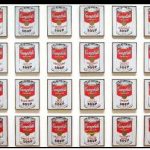 2. Follow Andy Warhol’s Lead. Take a “known” image, and turn it into something new and fresh. One of Warhol’s most iconic works is a canvas filled with soup cans. Anything can serve as inspiration: old photos, pictures of the circus or a carnival, graffiti, a store display, and so on. Turn the mundane into something special.
2. Follow Andy Warhol’s Lead. Take a “known” image, and turn it into something new and fresh. One of Warhol’s most iconic works is a canvas filled with soup cans. Anything can serve as inspiration: old photos, pictures of the circus or a carnival, graffiti, a store display, and so on. Turn the mundane into something special.
 3. Gather Tips From Successful Artists. The internet is filled with tips: tips for writers; tips for graphic designers; tips for film-makers; and so on.
3. Gather Tips From Successful Artists. The internet is filled with tips: tips for writers; tips for graphic designers; tips for film-makers; and so on.
Start gathering these tips–in a blog, in a notebook, or using whatever tool suits your fancy–and turn to them when you’re not sure what to do next.
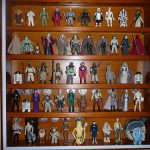 4. Collect Stuff That Catches Your Eye. Look at the following quote from Lynne Perrella, author of “Alphabetica: An A-Z Creativity Guide for Collage and Book Artists”:
4. Collect Stuff That Catches Your Eye. Look at the following quote from Lynne Perrella, author of “Alphabetica: An A-Z Creativity Guide for Collage and Book Artists”:
“Whether we call it collecting, scavenging, accumulating, scrounging, gathering or junking, it’s all about the urge to surround ourselves with our stuff, our loot, our stash, our hoard, our mother lode of treasures, and to read the inspiration that these sometimes inexplicably irresistible objects provide. Whether the collected objects are actually used in works of art or merely provide inspiration, the synchronicity between Artist and Object is undeniable.”
 5. Persevere. The Chinese bamboo tree will not sprout for the first five years after you plant it. You water and fertilize it for five whole years and nothing happens. Then, sometime during the fifth year, the Chinese bamboo tree sprouts and grows ninety feet in six days.
5. Persevere. The Chinese bamboo tree will not sprout for the first five years after you plant it. You water and fertilize it for five whole years and nothing happens. Then, sometime during the fifth year, the Chinese bamboo tree sprouts and grows ninety feet in six days.
 6. Be a Tireless Warrior For Your Project. Davy Rothbart, founder of “FOUND Magazine”, started a website–then a magazine, and then created several books– based on a collection of notes, letters, photos, journals, and to-do lists that people have plucked up off the ground, found in alleyways, and picked up off the subway floor.
6. Be a Tireless Warrior For Your Project. Davy Rothbart, founder of “FOUND Magazine”, started a website–then a magazine, and then created several books– based on a collection of notes, letters, photos, journals, and to-do lists that people have plucked up off the ground, found in alleyways, and picked up off the subway floor.
His enterprise all started when someone mistakenly left a note on his windshield. Davy indicates that when trying to bring your ideas out into the world, you have to be thick-skinned. He had to deal with lots of rejection when bookstores didn’t want to carry his magazine.
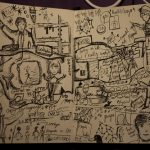 7. Improve your visual thinking. Visual thinking is about using pictures to help you solve problems, think about complex issues and communicate more effectively. It takes you beyond the linear world of the written word, lists, and spreadsheets, and into the non-linear world of maps, sketches, symbols, and diagrams.
7. Improve your visual thinking. Visual thinking is about using pictures to help you solve problems, think about complex issues and communicate more effectively. It takes you beyond the linear world of the written word, lists, and spreadsheets, and into the non-linear world of maps, sketches, symbols, and diagrams.
 8. Reframe your mistakes. Edward de Bono suggests that there is a need for a positive word to describe ‘a fully justified venture which for reasons beyond your control did not succeed’. The available words such as ‘failure’ and ‘mistake’ are unfair and squelch creativity.
8. Reframe your mistakes. Edward de Bono suggests that there is a need for a positive word to describe ‘a fully justified venture which for reasons beyond your control did not succeed’. The available words such as ‘failure’ and ‘mistake’ are unfair and squelch creativity.
In addition, de Bono says the following: “It is better to have enough ideas for some of them to be wrong, than to be always right by having no ideas at all.”
 9. Think of New Combinations of Everyday Objects. Many creative people have defined “creativity” in much the same way as Thomas Disch does in the following quote: “Creativity is the ability to see relationships where none existed.”
9. Think of New Combinations of Everyday Objects. Many creative people have defined “creativity” in much the same way as Thomas Disch does in the following quote: “Creativity is the ability to see relationships where none existed.”
Here are three examples:
- Wheels + gym shoe = roller skates;
- TV + Music = MTV;
- Clock + Alarm = alarm clock
 10. Avoid crowds. Take Hugh MacLeod’s advice: don’t try to stand out from the crowd. Instead, avoid crowds altogether. Mad Magazine’s Al Jaffee conceived of his comic strip “Tall Tales” while going through difficult financial times. He managed to break into the business of syndicated comics by doing something different than what everybody else was doing.
10. Avoid crowds. Take Hugh MacLeod’s advice: don’t try to stand out from the crowd. Instead, avoid crowds altogether. Mad Magazine’s Al Jaffee conceived of his comic strip “Tall Tales” while going through difficult financial times. He managed to break into the business of syndicated comics by doing something different than what everybody else was doing.
Instead of drawing a traditional horizontal strip that would compete with the existing material, he opted for a seven-inch-tall vertical strip, which gave editors a lot more flexibility as to where in the paper the strip would run. Ask yourself: how can you avoid the crowd?
 11. Practice being in a receptive state of mind. Instead of constantly having the television on, listening to your iPod, and surrounding yourself with noise and other distractions, practice being in a relaxed, contemplative state of mind. This state of mind is the one most conducive to allowing creative thoughts to slip into your mind.
11. Practice being in a receptive state of mind. Instead of constantly having the television on, listening to your iPod, and surrounding yourself with noise and other distractions, practice being in a relaxed, contemplative state of mind. This state of mind is the one most conducive to allowing creative thoughts to slip into your mind.
 12. Adopt the Four Roles of the Creative Process. Follow Roger van Oeck’s advice from his book “A Kick in the Seat of the Pants”
12. Adopt the Four Roles of the Creative Process. Follow Roger van Oeck’s advice from his book “A Kick in the Seat of the Pants” and adopt the four roles of the creative process: Explorer, Artist, Judge, and Warrior.
- The Explorer. When it’s time to seek out new information, adopt the mindset of an Explorer. Get off the beaten path, poke around everywhere, be curious, and pay attention to unusual patterns.
- The Artist. When you need to create a new idea, let the Artist come out. Ask what-if questions and look for hidden analogies. Break the rules and look at things backwards. Apply creativity techniques. Exaggerate. Look at things from many different perspectives.
- The Judge. When it’s time to decide if your idea is worth implementing, or if there is anything that needs to be added or subtracted from your idea, see yourself as a Judge. Ask what’s wrong and if the timing is right. Question your assumptions and make a decision.
- The Warrior. When you carry your idea into action, be a Warrior. Get excited about implementing your idea, eliminate all excuses, and do what needs to be done to reach your objective.
 13. Make Your Creative Dreams Real. The amazingly creative author SARK explains in her book,“Creative Companion: How to Free Your Creative Spirit”,
13. Make Your Creative Dreams Real. The amazingly creative author SARK explains in her book,“Creative Companion: How to Free Your Creative Spirit”, that you have to make your ideas “real”.
SARK had the following idea: she wanted to make some cards to guide and help people in their spiritual journey. Therefore, she set about inventing their form. Here’s what she did:
- By tearing French rag paper into small squares, and hand-coloring the edges, she created a canvas on which she could write her messages.
- She then folded an envelope out of the same paper, dyed some cotton string to tie it shut with, and wrote a simple instruction guide.
And voilá . . . these became spirit cards and she sold thousands of them.
 14. Make Time to Be Creative. Many people have the intention to make time for creative pursuits, but life keeps getting in the way. After all, there’s commuting, work, doing the laundry, picking up the kids from soccer practice, and the list goes on and on.
14. Make Time to Be Creative. Many people have the intention to make time for creative pursuits, but life keeps getting in the way. After all, there’s commuting, work, doing the laundry, picking up the kids from soccer practice, and the list goes on and on.
You won’t suddenly find the time to be creative; you have to make the time. Carve out one hour a day for your writing, drawing, composing, and so on. Use your creative hour for self-expression, to discover more about yourself, to enter the state of flow, to bring something new into the world, and to simply disconnect from the stress of everyday life.
Live your best life by being uber creative.


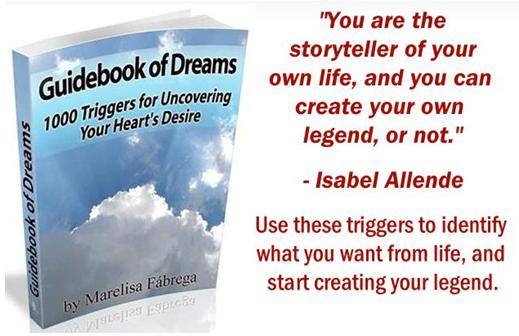
Related Posts:
- How to Take Back Control of Your Life
- 20 Ways to Boost and Replenish Your Energy
- Ten Strategies for Overcoming the Negativity Bias and Increasing Your Quality of Life
- Five Ways to Make Friends and Get Along With Others
Did you enjoy this article? Subscribe to “Daring to Live Fully” by RSS or by email, and get free updates.


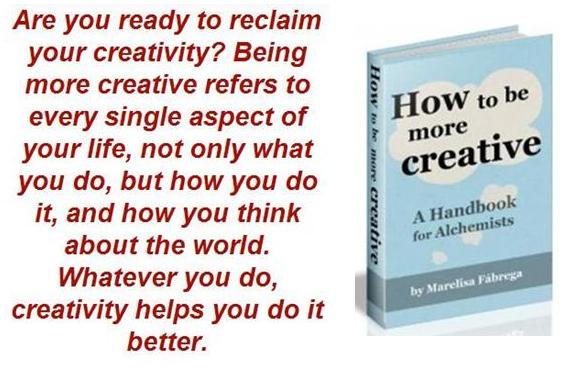

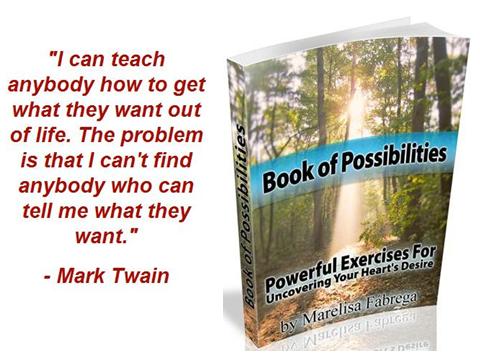



 Marelisa Fabrega is a lawyer and entrepreneur. She holds a Bachelor of Science in Business Administration from Georgetown University in Washington, D.C., as well as a Juris Doctor from the Georgetown University Law Center. You can learn more about her
Marelisa Fabrega is a lawyer and entrepreneur. She holds a Bachelor of Science in Business Administration from Georgetown University in Washington, D.C., as well as a Juris Doctor from the Georgetown University Law Center. You can learn more about her 






Comments on this entry are closed.
I’m considered to be a “creative” person in terms of artwork, crafting, gardening, etc., and I often hear “but I’m not creative like you are” in various conversations. I always remind people that creativity doesn’t require you to be an artist…out-of-the-box problem solvers, organizers, mediators, etc., are all creative people in finding solutions for things that are difficult to resolve.
Hi Rebekah: Exactly. Creativity can apply to anything: finding a way to get your child to bed without him making a fuss; preparing a meal from the stuff you already have in your pantry; or finding a unique way to get some shade from the sun (I’m looking at an umbrella I strung up to keep the sun out of my eyes).